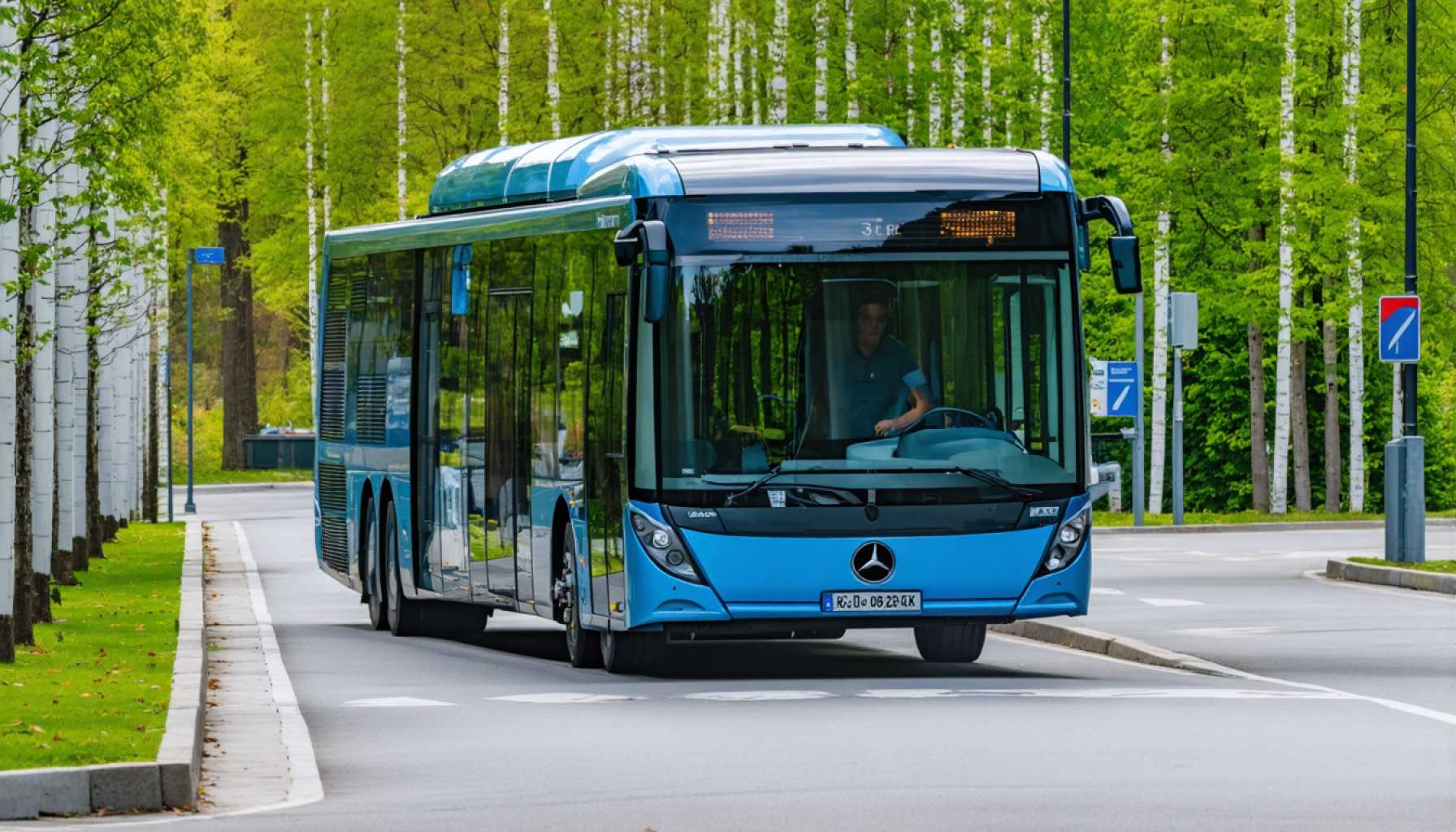- Daimler Buses is advancing urban transportation by enhancing the longevity and efficiency of its eCitaro electric buses.
- Key challenges include addressing battery degradation with strategies like the “extended e-service network” for reconditioning and smart replacements.
- The introduction of fourth-generation NMC4 batteries in 2026 will enhance energy density and extend the range of eCitaro buses.
- The NMC4 batteries come with a 12-year warranty, ensuring the economic viability and sustainability of electric buses.
- Daimler aims to extend the service life of electric buses to rival diesel counterparts, moving towards a 15-year lifespan.
- Oberwörder’s strategy focuses on creating a sustainable ecosystem for electric buses, making them a long-term solution, not just a trend.
A quiet revolution hums on the horizon, with Daimler Buses steering into the electrifying future of urban transportation. In the world of electric buses, the heart—its battery—can be both a powerhouse and an Achilles’ heel. Yet, in the bustling corridors of innovation, Daimler Buses seeks to elongate the life of its eCitaro electric buses, bridging the gap between early adopters and the latest advancements.
Imagine the eCitaro gliding through the streets, its sleek, silent presence a stark divergence from the noisy diesel behemoths of yesterday. Despite their environmental edge, early e-buses face a familiar foe: battery degradation. These buses, initially heralding a new era, now require a fresh approach to battery longevity as their initial power sources lose vigor. Chief Executive Till Oberwörder recognizes this challenge, setting forth a novel plan that could reshape the landscape of public transportation.
The spotlight now turns to a term laden with promise: the “extended e-service network.” This initiative not only whispers words of hope for electric propulsion but also spells tangible change for the first-generation eCitaros. Through meticulous reconditioning and smart replacements, Daimler Buses aims to restore these mechanical hearts, pulsating with renewed energy. Each individual battery module undergoes rigorous scrutiny, with reconditioning acting as a vitamin shot; boosting their vitality, ensuring these buses continue to serve urban throughways efficiently.
But there’s more. The arrival of the fourth-generation NMC4 batteries in 2026 promises something akin to a technological renaissance. These new batteries offer not only enhanced energy density but also extended range, allowing the eCitaro to travel further without a recharge—transforming a logistical hurdle into a potential highway advantage. The thoughtfully crafted upgrade ensures that fewer batteries might achieve what once required an entire pack, shining a light on sustainable innovation.
Daimler Buses sees not just the vehicles but the entire ecosystem they create. Oberwörder’s strategy harmonizes with environmental and economic virtues, tailoring services to match, if not exceed, the lifespan once only dreamt possible with diesel buses. The goal is audacious yet achievable: a service life stretching towards 15 years, rivaling and perhaps surpassing their diesel-powered predecessors.
This new battery generation arrives with an offer too tempting to refuse: a warranty extending up to 12 years. Picture an intricate system, a web of e-services woven together, promising that these buses will remain economically viable, ensuring that the leap towards electric isn’t just a temporary trend but the new norm.
The ambition is clear: to reconfigure how cities perceive public transportation forever. With a robust e-service network, a focus on the entire lifecycle of the bus, and the determination to make electric buses as eternal as their oil-guzzling counterparts, Daimler Buses challenges the industry to reimagine what’s possible. Electric isn’t just an alternative; it’s the future staking its claim—heart by rejuvenated heart, bus by transformed bus.
The Silent Revolution: How Daimler Buses is Transforming Electric Public Transport
Advancements in Electric Bus Technology
Daimler Buses is making significant strides in the domain of electric public transport, particularly with its eCitaro fleet. The core of this transformation is a concerted effort to tackle challenges such as battery degradation and to extend the service life of electric buses.
Battery Longevity: A Double-Edged Sword
Electric buses face a formidable challenge with battery life. As batteries degrade, they can lead to reduced range and efficiency. Daimler Buses is addressing this issue with their “extended e-service network,” focusing on meticulous reconditioning and smart replacements to prolong the usability of batteries in the eCitaro line.
Innovations in Battery Technology
The forthcoming NMC4 batteries, expected in 2026, mark a significant leap forward. These batteries offer increased energy density and range, which can reduce the frequency of recharging stops. This allows buses to operate longer routes efficiently, which is a game-changer for urban transportation systems.
Real-World Use Cases and Market Trends
Daimler’s initiative can significantly impact cities seeking sustainable public transit solutions. More cities are investing in electric buses as part of their green initiatives to reduce pollution and promote sustainable urban mobility. The innovations in battery technology and the comprehensive service support promise to make electric buses more economically viable in the long term.
Pros and Cons Overview
Pros:
– Increased Range: With advanced batteries, buses can travel further without recharging.
– Lower Operating Costs: Electric buses generally have lower maintenance and fuel costs compared to diesel buses.
– Environmental Benefits: Reduced emissions contribute to cleaner air and a reduced carbon footprint.
Cons:
– Initial Cost: Electric buses often have higher upfront costs compared to traditional diesel buses.
– Infrastructure Requirements: Installing charging stations requires significant investment.
– Battery Degradation: Though improvements are continuous, battery life and replacement remain focal challenges.
Actionable Recommendations
– City Planners: Consider integrating electric buses like the eCitaro into urban transport systems to promote sustainable development goals.
– Transport Operators: Explore the benefits of the new NMC4 batteries, which provide longer life and reduced maintenance needs.
– Policy Makers: Encourage policies that support infrastructure development for electric vehicles, such as subsidies for charging infrastructure.
For further exploration of Daimler’s innovations in the automotive industry, check out Mercedes-Benz Trucks.
This transformation by Daimler Buses signifies a pivotal moment in public transportation, providing sustainable, long-term solutions while addressing the efficiencies of electric bus technology. Implementing these advancements can lead to cleaner, more efficient urban transport systems globally.
